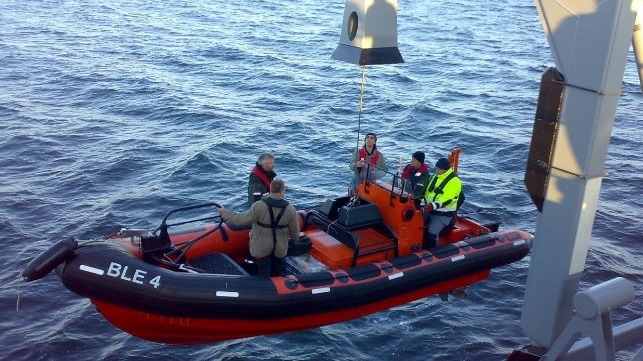Improving Safety Standards for Workboat Launch and Recovery

DNV GL is reviewing a new voluntary certification standard covering the davits used to launch and recover workboats and tenders, and it aligns closely with some of the design features that supplier Vestdavit has long advocated for safer and more efficient boat handling.
According to Vestdavit, the need for these standards has been brought into focus by the development of smarter, more complex davit designs, where lack of clarity on documentation can lead to incorrect use, and potentially to accidents.
DNV GL's proposed standard observes that existing certification approaches for non-lifesaving launching appliances are “ad-hoc based on the [lifesaving appliance] standard”. This is an approach that does not believe meets market or customer requirements, according to the class society.
IMO acted on a known lifesaving appliance (LSA) hazard in 2011, tightening rules on failures in on-load release hooks, with all existing ships to comply by July 1, 2019. However, a review by the European Maritime Safety Agency (EMSA) covering the period 2011-2014 reconfirms accepted industry wisdom by tracing 67 percent of marine casualties or incidents to human error.
To address this problem, the new standard for non-LSA davits emphasizes solutions that are more forgiving of system and human failures. The standard calls for more redundancy in critical components, control and monitoring systems, painter arrangements, launching cradles and radio remote control systems. It also includes criteria on where to position the davit on a mothership, and for winches themselves (single or dual) and release mechanisms. In addition, the standards move with the times by opening the way for fiber rope use in the davit fall operation, instead of insisting on wire ropes.
The new standards also recommend inclusion of an efficient shock absorber to dampen forces on boat launch and recovery, to limit the dynamic effect caused by the interaction with the waves.
The standards also accept the direct connection between equipment performance and different sea states; today, IMO SOLAS requirements offer only minimum handling speeds for davit lifting and lowering operations – regardless of conditions. In higher sea states, boats need to be hoisted clear of the water quickly enough to avoid being lifted by a following wave. When that wave subsides, the rope is slack, and the boat and its occupants drop dangerously. We have consistently argued that basing operations on the sea state in which the vessel is operating is not only favourable, but essential for safe boat handling.
For Vestdavit's recommendations on boat lifting and lowering speeds in relation to sea states, visit www.vestdavit.no/how-sea-state-is-linked-to-davit-performance.
The opinions expressed herein are the author's and not necessarily those of The Maritime Executive.
